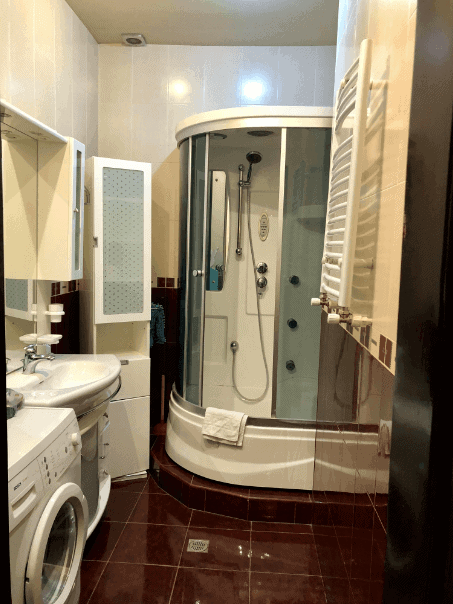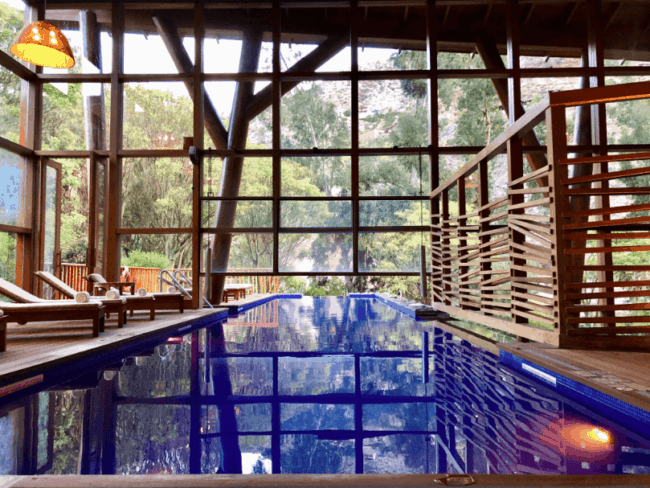MileValue is part of an affiliate sales network and receives compensation for sending traffic to partner sites, such as CreditCards.com. This compensation may impact how and where links appear on this site. This site does not include all financial companies or all available financial offers. Terms apply to American Express benefits and offers. Enrollment may be required for select American Express benefits and offers. Visit americanexpress.com to learn more.
Note: Some of the offers mentioned below may have changed or are no longer be available. You can view current offers here.
By Amy M. Gardner and Keith R. Sbiral
This is Part III of our series on how we used miles and points to make possible a 10 week, round-the-world trip in 2018.
- If you missed Part I, you can check it out here.
- You can find Part II (on airlines) here.
In Part III we will discuss hotels and accommodations. For more information on photography, photographers, and places we traveled, please check out reddotbluedot.com.
Planning 70 nights of lodging was initially overwhelming. We had what seemed like a lot of hotel points back when your Club Carlson card gave two nights for the price of one, or when 5,000 point PointsBreak nights were more prevalent. (Between the two of us, we started planning with about 500,000 points in Hilton, SPG (post-Marriott merger numbers), Club Carlson, and fewer in IHG.) We didn’t know how far our points would go, but quickly discovered that points weren’t the best bet for much of our lodging anyway. That meant that, to try to stick to our goal of $100/night average, we needed to look beyond points, stretch our points where possible, and use those credit card free nights. We also found that just a few extra steps could save us at least 5%, and usually as much as 15%, off Airbnb and hotels.com.
Another complication was that we were traveling with one carry-on and one personal item each, so we needed to do laundry about once per week. (In reality, we did laundry whenever we were in an Airbnb, supplemented by drop-off services where readily available and hotel services as a last resort.)
Ultimately, our lodging fell into three categories:
- apartments rented via Airbnb using a specific strategy to reduce the cost
- hotels booked using points, cash and points, or free night certificates
- hotels booked using cash, via one of our preferred methods for reducing costs
First, we considered how long we would be in a particular place. We only styed one night a handful of times over the summer, but we knew for those it wasn’t worth checking Airbnb because of the cleaning fees (Sarah Page: very true and a good point, I’m a huge Airbnb person but I also rarely book them for one night stays). Next we went through a list of sites we checked to get a sense of options and prices, including…
- AwardMapper.com
- Airbnb
- hotels.com
- agoda.com
After we identified options, we checked TripAdvisor and then went to the hotel’s website directly to check pricing. Finally, particularly for properties not part of a big chain, we checked booking.com. (Sarah Page: I love booking.com because it helps me find great value boutique hotels which I prefer, and have used it enough to earn a “Genius” ranking which regularly gets me 15% off hotel nights. If you don’t already have a booking.com account, sign up through that link and you’ll earn a $20 credit after your first booking!)
We also used recommendations from friends and from Facebook groups (Every Passport Stamp was great for more unusual destinations, and Award Wallet 101 was good for others). For places we stayed four nights or longer, we also checked the Citi Prestige site in case we could use the 4th night free benefit. It sounds convoluted, but by the end of the summer it never took us more than 10-20 minutes to decide where to stay.
We stayed in Airbnbs in Medellin, Colombia; Tbilisi, Georgia; and León and Barcelona, Spain. They ranged from a studio in Medellin to a two bedroom apartment in Barcelona, but all were clean, well-located, had good wifi and washing machines, and all were $50-100/night.

For Airbnbs, we first located a property, then went to cashbackmonitor.com to see who had the best offer for our preferred gift card site. Then we went through that portal to buy electronic Airbnb gift cards. Gift card codes in hand, we returned to cashbackmonitor.com to see who had the best offer on Airbnb, then went through that portal to book using the gift cards. We routinely saved at least 5-15% (depending on promos) off Airbnb’s published rates and often got miles in addition. (Note that we also followed Scott‘s advice on messaging Airbnb hosts to get a lower price before we did the routine above, and it usually worked! (Sarah Page: I do this almost every trip I take, and have saved thousands of dollars over the years/stayed at numerous properties listed as more expensive than I would be willing to pay for. I just saved a bunch on a property in Buzios, Brazil with a pool overlooking the ocean, post on that coming soon!)

For hotels, we initially assumed we would redeem points or stay at chains to replenish our point balances, but found it was often better to pay cash and stay at local chains or stand-alone hotels. Without the time or ability to map out our entire trip before we left, we were also reluctant to use up too many points when there were cash options within our budget.
Ultimately, we used points/cash and points/free night certificates at memorable properties like Tambo del Inka in the Sacred Valley of Peru, where we had a great free breakfast and great stay for $140 (including tax) and 6,000 SPG points per night…

in Valle Sagrado, Peru
… and the Kiev Intercontinental, where we redeemed free night certificates and 30,000 IHG points per night in lieu of over $300/night.

We also used points or cash and points nights where it made life much easier, like the Sheraton in the Frankfurt airport for 5,000 points and $80 (including tax).
Cash was often the best option, especially where the chain hotels had such high redemption costs they just weren’t worth it. For example, at a Hilton in Abu Dhabi (recently rebranded as Radisson Blu) we were upgraded to a huge suite and could have eaten three meals a day plus snacks for free in the lounge. (An appealing option when the temperature was over 100 degrees and we needed a quiet place to catch up on work.) The points redemption wasn’t a good reflection of the cost (just $70/night with taxes).
The Citi Prestige 4th night free benefit saved us money, including in Lima, Peru, where we stayed at the ibis Miraflores for a nightly average of just $60, including taxes.
Local chains or stand-alone properties were often better located both for Keith’s photography interests, and for our desire to get off the beaten path, and we encountered big variations in prices. In Tokyo, for example, Agoda’s prices were as much as $100 per night less than hotels.com, booking.com, or other websites for the same hotels.

We also sometimes contacted smaller hotels directly to see if they would offer a better rate than through the big websites, but usually the extra email and delay to hear back weren’t worth the few dollars off we sometimes secured.
We were able to save 10% and often more on hotels booked through hotels.com by following the same routine laid out above for Airbnb: cashbackmonitor.com—>portal—>website to buy gift cards; cashbackmonitor.com—>portal—>hotels.com to book using gift cards.
Ultimately, points allowed us to reduce the cost in cities where hotels were otherwise astronomical and to stay at places in great locations, but being open to non-chain hotels, remembering to take advantage of the Citi Prestige 4th night free benefit, and not insisting on a “points or bust” approach ultimately was a better value for us.
Finally, the extra few minutes to check several websites each time and to pay with gift cards when booking through hotels.com and airbnb.com allowed us to stick to our $100/night goal over the course of 15 countries, even in traditionally expensive cities like Tokyo, Barcelona, and others.
We hope you enjoyed reading our series on miles and points for a round-the-world trip. If you would like to see more photos and read about our travels and experiences, please check out reddotbluedot.com (images are on the red blog, writing on the blue blog), and join our email list for occasional emails about photography and travel. (You can even get your own Red Dot Blue Dot t-shirt to wear for your travels!) And please post any questions in the comments — we have benefited so much from advice from Scott, Sarah Page and the other writers and commenters on MileValue and hope others can learn from our experiences!
A Final Note from Sarah Page
Amy and Keith, thank you so much for sharing your story and strategy with MileValue readers. You are an inspiration to us all to hit the road, and a real life example and reminder that you don’t need a trust fund or lottery winnings to do it comfortably 😉
If you’d like to share your story collecting or redeeming travel rewards, or your experience on the flight or in the vacation destination that your miles got you to, please email me at sarahpage@milevalue.com for consideration.


Thanks
I have the Citi Prestige card and next month I will reapply for the capital one venture card so I can get 50K points and 10% points when I use their line so like 20% off .
If u haven’t posted ur cards Please Do.
CHEERs
Hi,
Does the hotels.com routing paying with giftcards, count for 1 night free after 10 nights?
Hi Manuel,
Thanks for reading, and for your question! We didn’t have any problems getting credit towards the buy 10-get 1 free benefit on hotels.com, and have used gift cards on easily 15 nights of stays.
Thanks again!
Amy
Great post – Such helpful information for frequent travelers and even for infrequent travelers like me! Thank you!
Certainly glad this helped. If you are interested in travel or photography check out our site http://www.reddotbluedot.com and sign up for our (infrequent, content packed) email list! 2019 is going to be an exciting year for RedDotBlueDot!
I don’t know BUT I know u can’t pay for all hotels with a GC ..
CHEERsw
Betty S.
The Tambo del Inca looks amazing, I’m going to be staying there in June and can’t wait! Looks like you have stayed at some amazing properties with cash and points! Great read.
This is so eye-opening and makes traveling abroad seem much less intimidating, financially!
Thank you so much for this post! On to planning our upcoming adventure!
My husband and I have been fortunate enough to travel all over the world mostly on points. This summer we’re hitting Sorrento, Croatia (Montenegro day trip) and Greece from June 9-July 3 flying out of San Diego. Airfare and accommodations are all on points. We are staying at Hilton Sorrento, Hilton Dubrovnik, Domes Nunez, and Santa Marina in Mykonos. Used United Airlines miles for all the flights. In December headed back to Japan again all points for the flights and accommodations. Using points gives us the cash to use for the more fun part of the trip:-). We’re both teachers so if not for playing the points games, we will never be able to travel as extensively the way we do.